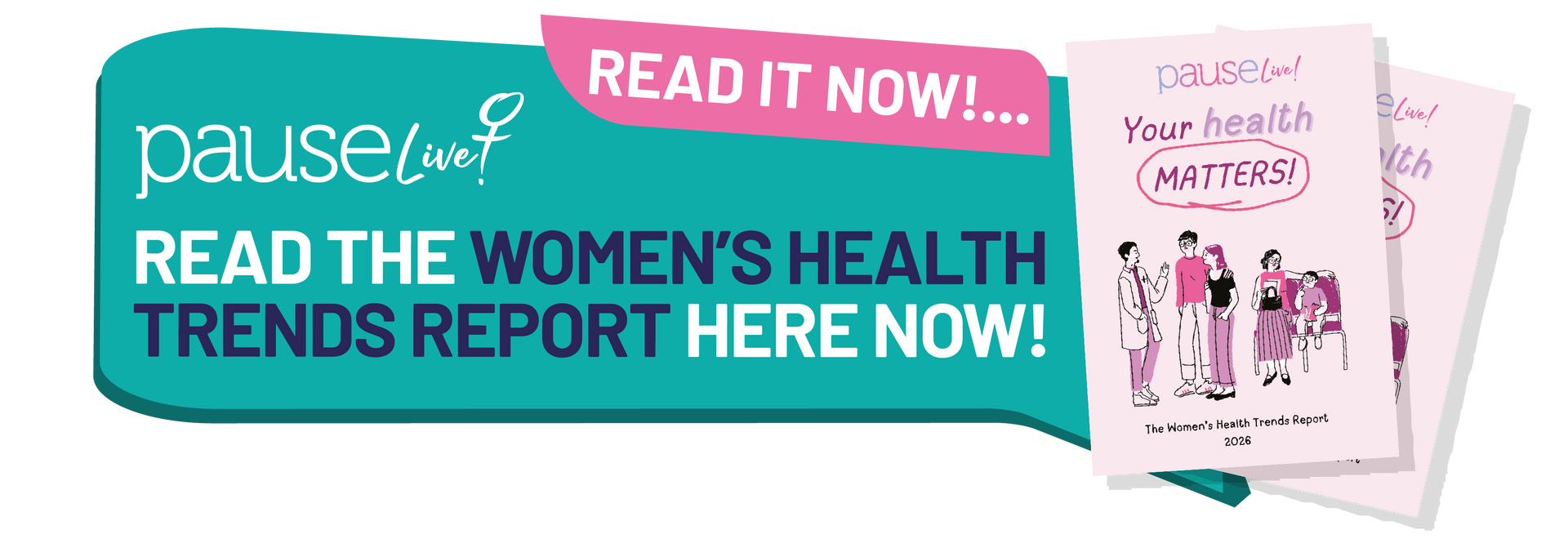The different stages of menopause
Menopause impacts all women as they get older, with varying symptoms causing both mental and physical challenges on their journey through it.
There are three main stages that women will experience: perimenopause, menopause and post-menopause. Here we detail what each entails.
Perimenopause
Perimenopause means ‘around’ menopause. Essentially, it’s the time leading up to when your periods stop completely.
Your hormone levels begin to change, and you may start seeing one or more of the typical menopausal symptoms. All women experience symptoms differently, but generally one of the first signs of perimenopause is irregular periods.
Other symptoms include:
- Lighter or heavier periods
- Brain fog
- Anxiety
- Mood swings
- Hot flushes
- Difficulty sleeping
- Headaches and migraines that are worse than usual
- Weight gain
- Dry skin
- Reduced sex drive
- Muscle ache and joint pains
- Vaginal dryness and pain
- Discomfort during sex
- Urinary tract infections (UTIs)
Perimenopause usually starts when women are in their 40s and, on average, lasts four years. In some cases, women can experience perimenopause for up to 10 years.
Can women experience perimenopause early?
According to the NHS, premature menopause is estimated to affect 1% of women under the age of 40 and 0.1% of women under the age of 30.
Premature menopause can be expected if women have certain surgeries or cancer treatments, or may be completely unexpected with no particular reason for why it has occurred.
The signs of this happening are the same as those for normal perimenopause but, as it is not anticipated, some women can be misdiagnosed. It’s important to speak to your GP if you know you’re not pregnant and have been having irregular periods for four to six months. A blood test can then determine if you’re going through perimenopause or have other health concerns such as diabetes or thyroid problems.
Find out more about
early menopause
here.
Menopause
Menopause is defined as when you have had no periods for a full year. It marks the end of a woman’s reproductive years – you can no longer become pregnant; except in rare cases where specialist fertility treatment is given.
The average age of menopause is 51, but this can vary from woman to woman.
Post-menopause
This is the time in life after you’ve not had a period for 12 consecutive months and lasts for the rest of your life. Your hormone levels will remain consistently low, you won’t have any more periods and you’ll no longer be able to become pregnant naturally.
Menopausal symptoms don’t necessarily ease off – many people still experience them but to a lesser degree. Women can have hot flushes for one to two years after menopause, and you may still struggle with your mental health. It’s important to seek help from your GP or a menopause specialist if this is the case.
Vaginal dryness and changes in sex drive are normal, as are dry skin, weight changes, hair loss, UTIs and other symptoms. You can continue to use the same treatment methods, such as HRT, that you took when you were peri-menopausal.
Can you still bleed after menopause?
Post-menopausal bleeding or spotting can occur because your vaginal lining has thinned as a result of lower hormone levels. Other causes can be cervical or womb polyps (non-cancerous growths) and a thickened womb lining as a result of HRT or being overweight.
In some cases, post-menopausal bleeding is caused by ovarian or womb cancer so it’s important to speak to your GP if you do notice this.
Are post-menopausal women at increased risk of illness?
Unfortunately, post-menopausal women are at increased risk of developing osteoporosis and heart disease so it’s important to maintain a healthy diet and regular exercise.
Find out more about this here.



